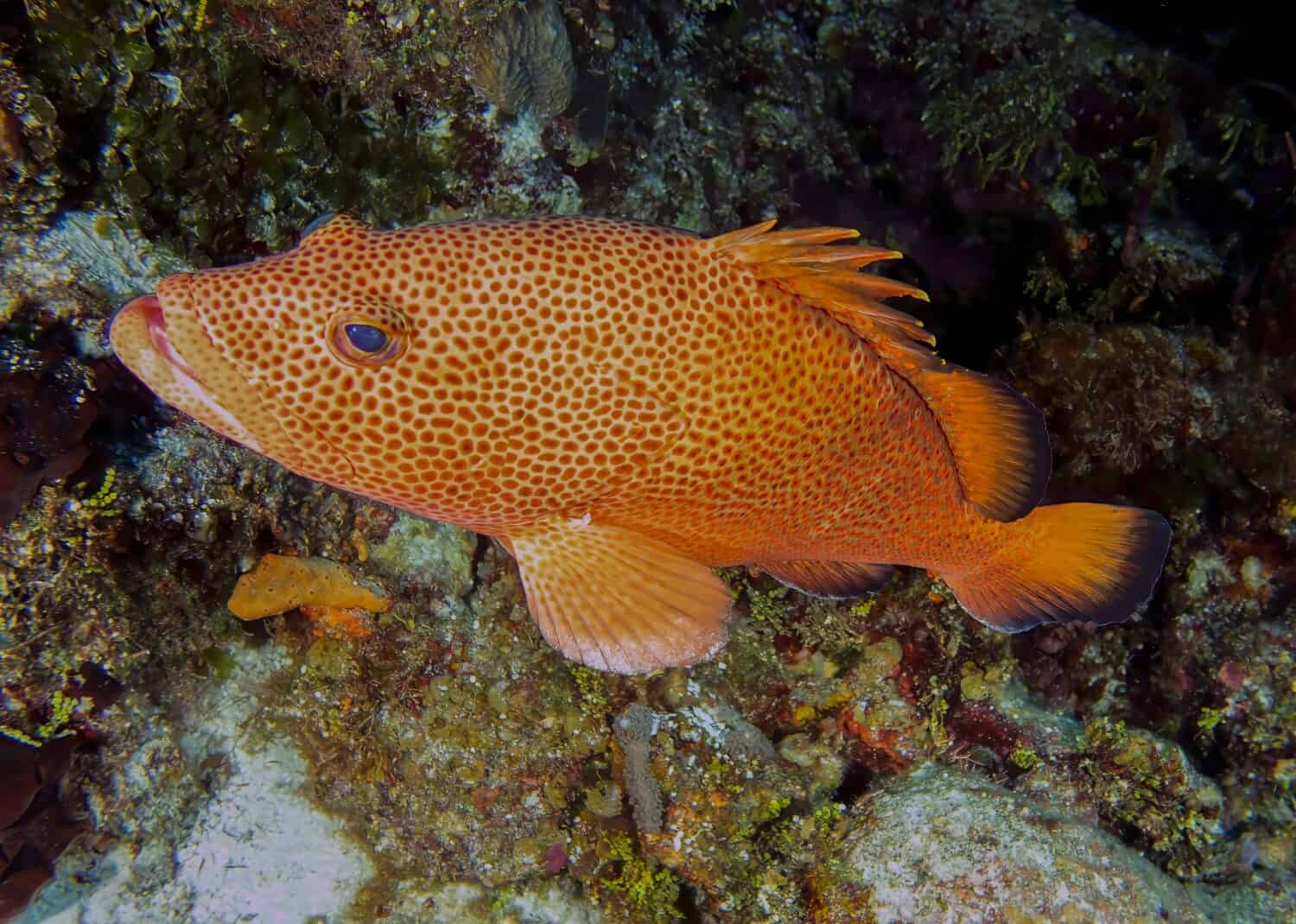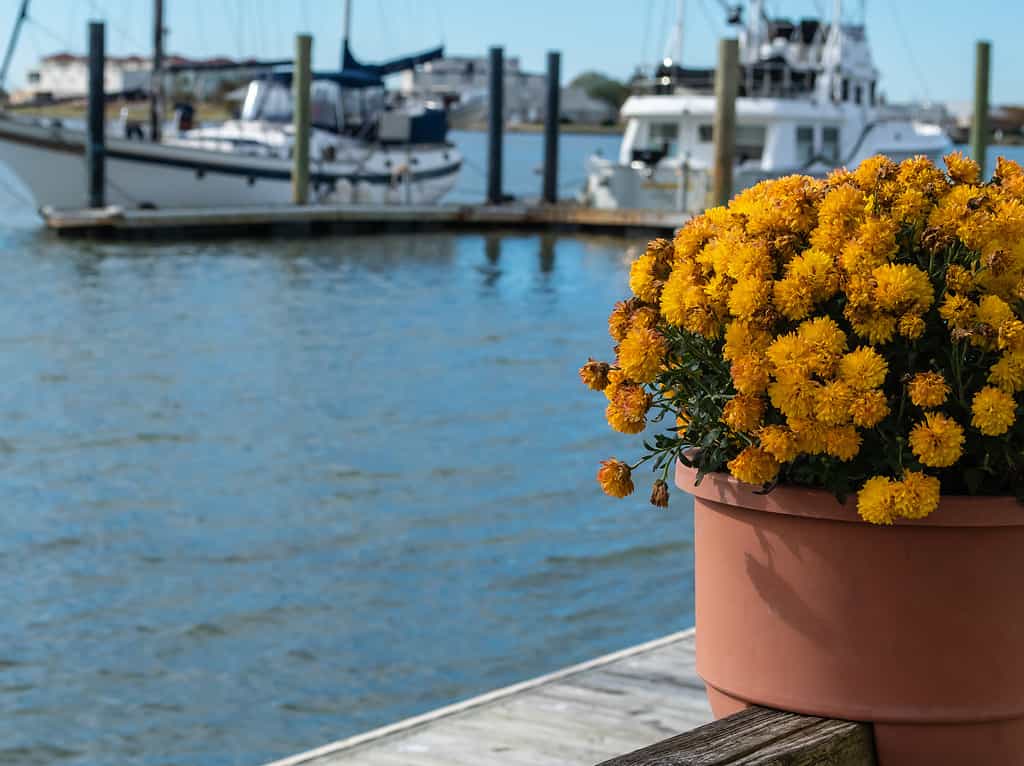North Carolina is an angler’s paradise as far as the East Coast goes. In the western mountains, rare species of local trout swim in pristine mountain waters, and to the east, coastal behemoths can be found in the ocean in some of the most productive fishing waters around. Recently, a record-breaking fish was caught in North Carolina waters, and it’s making headlines. Here’s what happened.
It’s Official: New State Record for Red Hind Set
There’s been a new record set in North Carolina, and it has nothing to do with humidity levels. On July 27th, a new state record for the largest-ever Red Hind was set outside of Beaufort Inlet.
The state record for the largest Red Hind ever caught is now 10 lbs, 2.4 oz, and was set by Christopher Rocci from Morehead City only a few weeks ago. The catch happened on July 27th, and the fish measured 25.5 inches from tail to tip and was a chunky 20.5 inches in girth.
Chris Rocci set the record using his Penn Allyu II rod, combined with an Okuma SLX-50WII reel. At the time, he was fishing with pinfish and squid bait and landed it on 80 lb test.
Most of the time, new fish records are pretty incremental and only go up a few ounces (specifically with fish this size). Not this time. Chris was able to up the record by nearly a half-pound. Previously, the record for Red Hind was 9 lbs, 12.1 ounces, and was caught off the coast of Wrightsville Beach this year.
What is a Red Hind?

The red hind is a species of fish that belongs to the
grouper
subfamily and is related to sea basses.
©Rob Atherton/Shutterstock.com
A red hind is a kind of fish that looks like a grouper, but with red spots all over its body. It lives in the Atlantic Ocean, from North Carolina to Brazil, and likes to hang out near coral reefs. It can grow pretty big, up to 30 inches and 48 lbs, but most of them are much smaller, especially in North Carolina.
They go by a few names, including Koon or lucky groupers (both of which come from the Caribbean), and they are part of the Serranidae family. Also within the Serrandidae family are sea bass, which is why they somewhat resemble them in shape.
A red hind eats mostly crustaceans like shrimp and crabs, but they’ll eat other small animals if given the chance. They are known for their ability to change their sex from female to male when they get older, classifying them as protogynous hermaphrodites. They does this to have a better chance of mating. They usually mate in groups during the winter months, especially in the Caribbean.
On top of being a great fish to catch, they are extremely valued for their flesh. They are often exported to the U.S. for food and are bred in recreational fisheries in certain parts across their range.
Where Was the Record Red Hind Caught?

Beaufort is a town located in North Carolina, with a large inlet a few miles out to sea known as the Beaufort Inlet.
©Dawn Damico/Shutterstock.com
Beaufort Inlet is a channel leading south to the Atlantic Ocean from the town of Beaufort, North Carolina. Beaufort is the fourth oldest town in North Carolina and was founded in 1709 as a fishing and whaling settlement and is still a thriving little coastal town today.
The region is inside the Outer Banks (sometimes called the Inner Banks region) and has a ton of history centered around fishing. It’s an important area for fisheries and fish preservation, which is potentially part of the reason such a large fish was found in the area! The National Oceanic and Atmospheric Administration (NOAA) Center for Coastal Fisheries and Habitat Research is in Beaufort, plus the Rachel Carson, NC Coastal, and National Estuarine Research reserves are all in the immediate area. A lot of fish is being protected in the waters around the area. Also, Blackbeard famously operated around the area.
Other Notable Fishing Off NC’s Coast
The coast of North Carolina is home to some of the best fishing along the east coast, red hind included. Here are some of the most notable game/food species caught in the region:
- Red drum
- Black drum
- Spotted seatrout
- Flounder
- Sheepshead
- Croaker
- Cobia
- Tarpon
- Snapper
- Amberjack
- Grouper
- Sailfish
- Blue and White Marlin
The North Carolina coast is close to the Gulf Stream, has many reefs, and offers some of the most diverse inshore bodies of water. Few places have bays, sounds, estuaries, and rivers, all condensed into a few miles like the NC coast does. The varied options result in many fish species, plus a strong fishing culture that’s developed over the years.
The photo featured at the top of this post is © Rob Atherton/Shutterstock.com
Thank you for reading! Have some feedback for us? Contact the AZ Animals editorial team.






